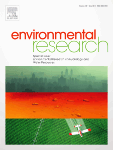Download
| File Size | 54.7 KiB |
|---|---|
| Date | May 20, 2015 |
| Downloads | 1 |
| Author | Sasha Bernatsky, AudreySmargiassi, MarkeyJohnson, Gilaad G.Kaplan, Cheryl Barnabe, Larry Svenson, Allan Brand, Stefania Bertazzon, Marie Hudson, Ann E.Clarke, Paul R.Fortin, Steven Edworthy, Patrick Bélisle, Lawrence Joseph |
Abstract
Objective
To estimate the association between fine particulate (PM2.5) and nitrogen dioxide (NO2) pollution and systemic autoimmune rheumatic diseases (SARDs).
Methods
Associations between ambient air pollution (PM2.5 and NO2) and SARDs were assessed using land-use regression models for Calgary, Alberta and administrative health data (1993–2007). SARD case definitions were based on ≥2 physician claims, or ≥1 rheumatology billing code; or ≥1 hospitalization code (for systemic lupus, Sjogren's Syndrome, scleroderma, polymyositis, dermatomyositis, or undifferentiated connective tissue disease). Bayesian hierarchical latent class regression models estimated the probability that each resident was a SARD case, based on these case definitions. The sum of individual level probabilities provided the estimated number of cases in each area. The latent class model included terms for age, sex, and an interaction term between age and sex. Bayesian logistic regression models were used to generate adjusted odds ratios (OR) for NO2 and PM2.5. pollutant models, adjusting for neighbourhood income, age, sex, and an interaction between age and sex. We also examined models stratified for First-Nations (FN) and non-FN subgroups.
Results
Residents that were female and/or aged >45 had a greater probability of being a SARD case, with the highest OR estimates for older females. Independently, the odds of being a SARDs case increased with PM2.5 levels, but the results were inconclusive for NO2. The results stratified by FN and non-FN groups were not distinctly different.
Conclusion
In this urban Canadian sample, adjusting for demographics, exposure to PM2.5 was associated with an increased risk of SARDs. The results for NO2 were inconclusive.
Environmental Research Volume 140, July 2015, Pages 474–478.
Objective
To estimate the association between fine particulate (PM2.5) and nitrogen dioxide (NO2) pollution and systemic autoimmune rheumatic diseases (SARDs).
Methods
Associations between ambient air pollution (PM2.5 and NO2) and SARDs were assessed using land-use regression models for Calgary, Alberta and administrative health data (1993–2007). SARD case definitions were based on ≥2 physician claims, or ≥1 rheumatology billing code; or ≥1 hospitalization code (for systemic lupus, Sjogren's Syndrome, scleroderma, polymyositis, dermatomyositis, or undifferentiated connective tissue disease). Bayesian hierarchical latent class regression models estimated the probability that each resident was a SARD case, based on these case definitions. The sum of individual level probabilities provided the estimated number of cases in each area. The latent class model included terms for age, sex, and an interaction term between age and sex. Bayesian logistic regression models were used to generate adjusted odds ratios (OR) for NO2 and PM2.5. pollutant models, adjusting for neighbourhood income, age, sex, and an interaction between age and sex. We also examined models stratified for First-Nations (FN) and non-FN subgroups.
Results
Residents that were female and/or aged >45 had a greater probability of being a SARD case, with the highest OR estimates for older females. Independently, the odds of being a SARDs case increased with PM2.5 levels, but the results were inconclusive for NO2. The results stratified by FN and non-FN groups were not distinctly different.
Conclusion
In this urban Canadian sample, adjusting for demographics, exposure to PM2.5 was associated with an increased risk of SARDs. The results for NO2 were inconclusive.
Environmental Research Volume 140, July 2015, Pages 474–478.



